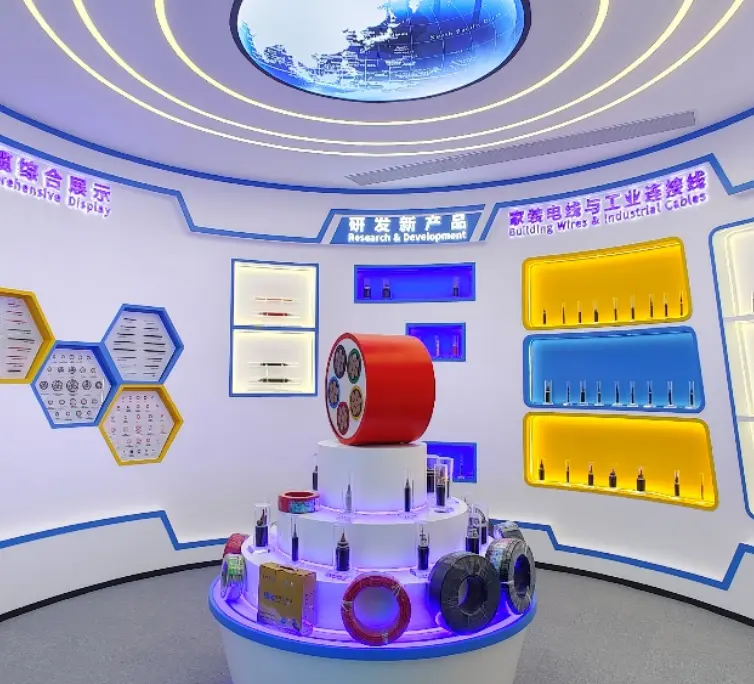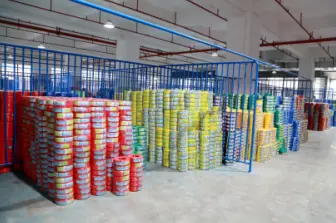About Electrical Power Cable Structure
Electrical power cables generally consist of three parts: core, insulating layer and protective layer. The core is used to conduct electricity; the insulation layer is to isolate the core conductor and the protective layer to prevent leakage; the protective layer is used to prevent the power cable insulation layer from being injured and damp, and to prevent the outflow of liquid insulation (insulating oil).
Ⅰ. The composition of electrical power cable core
There are two types of electrical power cable cores: copper core and aluminum core. The cross-sectional shape of the core is round, semi-circular and sector. Three-core and four-core low-voltage cables use fan-shaped cores. According to the different types and specifications of power cables, the core can be made into a single entity or a stranded core. The stranded core is formed by twisting round single wires and shaped single wires.
Ⅱ. The characteristics of various insulation structures of electrical power cables
1. Oil-paper insulated cables
Mainly divided into viscous impregnated paper insulation and non-drip, which are generally used in 3-35KV systems. The viscous impregnated paper insulated cable has simple structure, convenient manufacture, low price, easy installation and maintenance, and long life; it is not suitable for high-drop laying, and the insulating oil is easy to flow. The cost of non-drip impregnated paper insulated cable is slightly higher than that of viscous paper insulation, and it has a longer working life and can be used for high drop laying.
2. Plastic insulated cables
Commonly include polyvinyl chloride, polyethylene, and cross-linked polyethylene cables.
(1) Polyvinyl chloride insulated cables
The installation process of polyvinyl chloride insulated cables is simple, the installation and maintenance are convenient, and it can be adapted to high-drop installation, and is non-combustible; the working temperature has a significant impact on its mechanical properties. Generally used in 6KV and below systems.
(2) Polyethylene insulated cable
It can be applied to high-drop laying. It has good process performance and is easy to process, but it is easy to prolong combustion, easy to deform when heated, and easy to cause stress cracking. Used less frequently.
(3) Cross-linked polyethylene cable
The cross-linked polyethylene cable has a higher allowable temperature rise, so the allowable current carrying capacity is large, and the heat resistance is good. It is suitable for high-drop laying, easy to install and maintain, and has poor anti-corona and free discharge performance. Cross-linked polyethylene cables are now more and more widely used, suitable for various voltages.
3. Rubber insulated power cable
Rubber insulated cables are flexible, easy to bend, and flexible. They are suitable for multiple disassembly and assembly lines, but they have poor corona resistance, ozone resistance, heat resistance, and oil resistance, so they can only be used as low-voltage cables.
Ⅲ. The protective layer structure of the electrical power cable
In order to prevent mechanical damage, electrochemical corrosion and moisture intrusion, the cable core and insulation layer of the power cable have a tight protective layer. Now take XLPE insulated and PVC sheathed power cables as examples to illustrate the protective layer structure of electrical power cables.
The conductor is covered with a layer of semiconductor shielding layer, called the inner semiconductor shielding layer, which is used to prevent the electric field decomposition and corrosion caused by the long-term effect of the conductor electric field on the cross-linked polyethylene insulation 3. The cross-linked polyethylene insulation 3 is also covered with a layer of semiconductor shielding, which is called the outer semiconductor shielding layer.
There is a layer of copper tape shielding outside the outer semiconductor shielding layer, and their role is to weaken the effect of the external electric field on the cross-linked polyethylene to ensure good insulation performance. The copper tape shield is also used as a welding point for cable protective grounding. Outside the copper tape shielding, fillers are filled between the three cores, and the outermost layer is a three-phase turnkey steel ladle tape and a PVC outer protective cover.
Latest News & Blog
 English
English  français
français  Deutsch
Deutsch  العربية
العربية  tiếng việt
tiếng việt  ไทย
ไทย  čeština
čeština  Indonesia
Indonesia  Eesti
Eesti  български
български  slovenčina
slovenčina 



